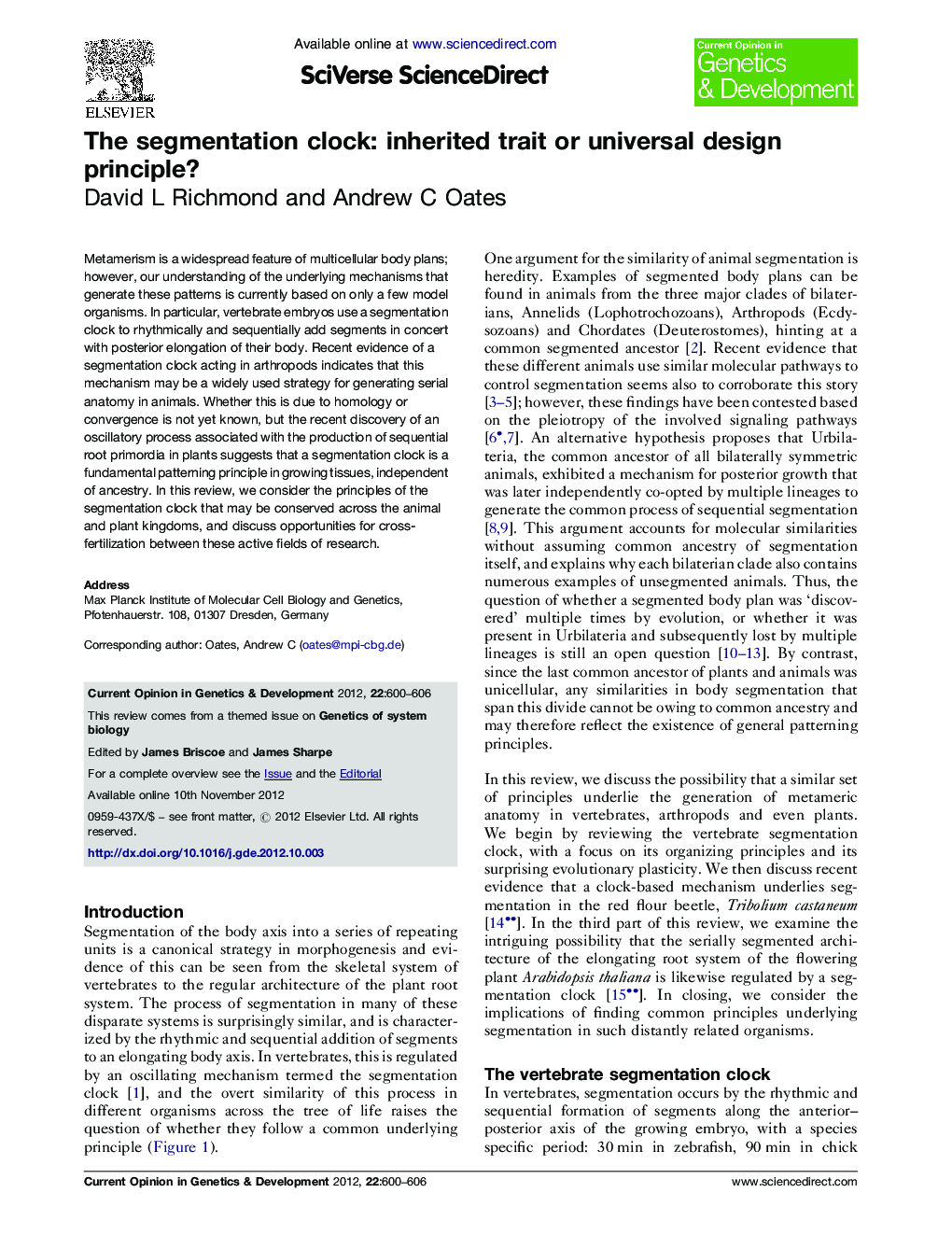| Article ID | Journal | Published Year | Pages | File Type |
|---|---|---|---|---|
| 5893280 | Current Opinion in Genetics & Development | 2012 | 7 Pages |
Metamerism is a widespread feature of multicellular body plans; however, our understanding of the underlying mechanisms that generate these patterns is currently based on only a few model organisms. In particular, vertebrate embryos use a segmentation clock to rhythmically and sequentially add segments in concert with posterior elongation of their body. Recent evidence of a segmentation clock acting in arthropods indicates that this mechanism may be a widely used strategy for generating serial anatomy in animals. Whether this is due to homology or convergence is not yet known, but the recent discovery of an oscillatory process associated with the production of sequential root primordia in plants suggests that a segmentation clock is a fundamental patterning principle in growing tissues, independent of ancestry. In this review, we consider the principles of the segmentation clock that may be conserved across the animal and plant kingdoms, and discuss opportunities for cross-fertilization between these active fields of research.
